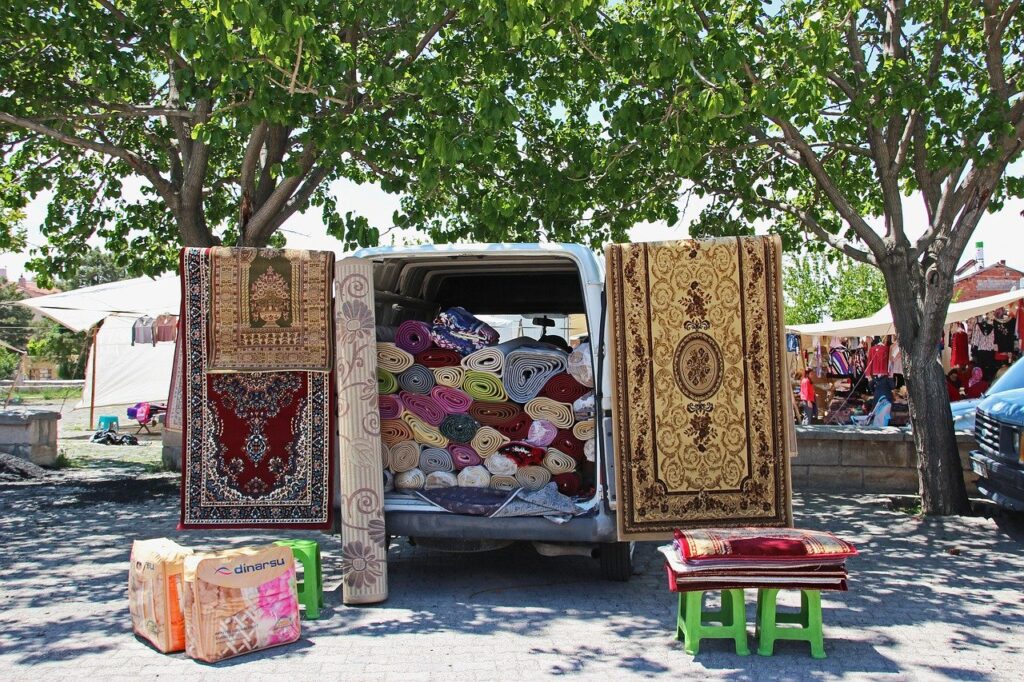There are so many kinds of area rugs that people choose to decorate their houses and warm their floors with, but some of the most cherished are antique, one-of-a-kind works of art made by master artisans from Persia. What makes these rugs so special and how can you tell the difference between them and other woven rugs?
There are a number of qualities that make a rug valuable: the artisan skill of the weaver or weavers, the materials they are woven from, the age of the rug, its beauty, and its uniqueness.
Any art-level Persian rug will be woven by a skilled weaver or a team of skilled weavers. These are people who have spent years developing their abilities and an artistic eye for design. Additionally, the weaving of the rug itself takes time. A room-sized rug may take a team of individual weavers a year or more to make, and each element will have been chosen to reflect the overall theme of the rug so there is a pleasing unity to its entire appearance. Be sure to look at the rug from a number of directions so you can see the way the light plays over the colors and design, creating movement. It should be pleasing to view in parts and as a whole in the same way a painting by a renowned artist is.
Weavers of this skill will choose only the best materials for their rugs too, so the wool will be soft and resilient. Not all wool is the same quality; in fact, the environment sheep are raised in effects strength and lanolin content. Sheep grazed in the Kurdistan region in Persian produce an excellent quality wool, and this is an important quality to look for in an antique Persian rug. Wool dyed with natural, instead of synthetic dyes, are more valuable as well. The dyes last longer and the variations of color are subtler.
Examine the back of the rug as well, and look carefully at the rows of tiny knots. This is a very good way to tell a hand-woven rug from one that is machine woven. On a hand-woven rug, the rug’s design will show on the back and the front, and on a machine-woven rug very little of it will. The larger the number of tiny knots, the more intricate the pattern is and the more beautiful and valuable the rug will be. Rug and antique experts will be able to tell the rug’s provenance from that pattern of knots as well as weavers from different ethnic groups produce different types of carpets.
Finally, you must take into account the condition of the rug. Any antique rug will have some wear. In fact, when valuing very old rugs, collectors will take wear into account more because fewer rugs from any period will have survived at all. However, as a collector or an owner, you must enjoy the appearance of your rug. It should have been regularly cleaned and not subject to abuse such as excess sunlight or mold – either of which will shorten the life and the value of the rug.
If you’re considering purchasing a Persian rug this holiday season or in 2017, take a little time to familiarize yourself with other rugs of value so that you know what you are looking for and what appeals to you as a person and a collector. There are many such wonderful rugs discussed in detail online to help you in this process. One last warning: there are many people out there selling “antique rugs” that are not antique. A good rule of thumb for buying is to be wary of good deals. Rug dealers know the value of their products. They survive on that knowledge. Buy what pleases you, but don’t gamble your money looking for a good investment if you are not as knowledgeable as they are about Persian rugs.


